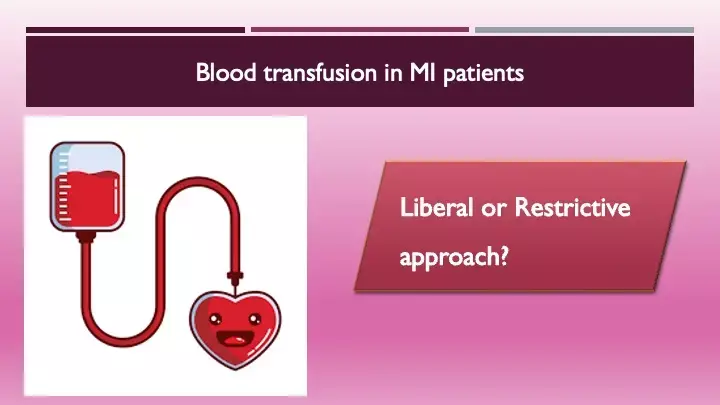- Home
- Medical news & Guidelines
- Anesthesiology
- Cardiology and CTVS
- Critical Care
- Dentistry
- Dermatology
- Diabetes and Endocrinology
- ENT
- Gastroenterology
- Medicine
- Nephrology
- Neurology
- Obstretics-Gynaecology
- Oncology
- Ophthalmology
- Orthopaedics
- Pediatrics-Neonatology
- Psychiatry
- Pulmonology
- Radiology
- Surgery
- Urology
- Laboratory Medicine
- Diet
- Nursing
- Paramedical
- Physiotherapy
- Health news
- Fact Check
- Bone Health Fact Check
- Brain Health Fact Check
- Cancer Related Fact Check
- Child Care Fact Check
- Dental and oral health fact check
- Diabetes and metabolic health fact check
- Diet and Nutrition Fact Check
- Eye and ENT Care Fact Check
- Fitness fact check
- Gut health fact check
- Heart health fact check
- Kidney health fact check
- Medical education fact check
- Men's health fact check
- Respiratory fact check
- Skin and hair care fact check
- Vaccine and Immunization fact check
- Women's health fact check
- AYUSH
- State News
- Andaman and Nicobar Islands
- Andhra Pradesh
- Arunachal Pradesh
- Assam
- Bihar
- Chandigarh
- Chattisgarh
- Dadra and Nagar Haveli
- Daman and Diu
- Delhi
- Goa
- Gujarat
- Haryana
- Himachal Pradesh
- Jammu & Kashmir
- Jharkhand
- Karnataka
- Kerala
- Ladakh
- Lakshadweep
- Madhya Pradesh
- Maharashtra
- Manipur
- Meghalaya
- Mizoram
- Nagaland
- Odisha
- Puducherry
- Punjab
- Rajasthan
- Sikkim
- Tamil Nadu
- Telangana
- Tripura
- Uttar Pradesh
- Uttrakhand
- West Bengal
- Medical Education
- Industry
Liberal blood transfusion strategy does not improve outcomes in acute MI patients with anemia: MINT study

A strategy of administering a transfusion only when the hemoglobin level falls below 7 or 8 g/dL has been widely adopted. But can a liberal transfusion strategy (hemoglobin threshold, <10 g/dL) among patients with an acute myocardial infarction and anemia improve outcomes in these patients remains debatable. A recent study published in this regard in NEJM and simultaneously presented at AHA 2023 meet has compared the restrictive strategy with more liberal one and found that the latter fails to significantly reduce the risk of recurrent myocardial infarction or death at 30 days.
From a mechanistic perspective, blood transfusion may decrease ischemic injury by improving oxygen delivery to myocardial tissues and reduce the risk of reinfarction or death. Alternatively, administering more blood could result in more frequent heart failure from fluid overload, infection from immunosuppression, thrombosis from higher viscosity, and inflammation.
The primary objective of the MINT trial was to determine whether the risk of death or myocardial infarction through 30 days differed between a restrictive transfusion strategy (hemoglobin threshold, 7 to 8 g/dL) and a liberal transfusion strategy (hemoglobin threshold, <10 g/dL) among patients with an acute myocardial infarction and anemia.
A total of 3504 patients were included in the study. The mean hemoglobin level was 1.3 to 1.6 g per deciliter lower in the restrictive-strategy group than in the liberal-strategy group.
The occurrence of primary-outcome was not significantly different between the two groups (16.9% in the restrictive-strategy group and 14.5% in the liberal-strategy group).
Death occurred in 9.9% of the patients with the restrictive strategy and in 8.3% of the patients with the liberal strategy; myocardial infarction occurred in 8.5% and 7.2% of the patients, respectively- both differences being not significant.
The trial population mimics patients seen in clinical practice!
“It was pragmatic, since it was designed to maximize the generalizability of the results. With few exclusions, the enrollment of 3504 patients included a wide variety of older patients who had a variety of myocardial infarction diagnoses, including both ST-segment elevation and non–ST-segment elevation and both type 1 and type 2 myocardial infarctions. In addition, the patients had many coexisting illnesses and were generally representative of patients in clinical practice with acute myocardial infarction and anemia”, noted the authors.
The authors conclude with “(the) trial end points suggest some benefit of a liberal strategy over a restrictive strategy, but additional studies would be needed to confirm that conclusion.
Source: NEJM: DOI: 10.1056/NEJMoa2307983
MBBS, MD , DM Cardiology
Dr Abhimanyu Uppal completed his M. B. B. S and M. D. in internal medicine from the SMS Medical College in Jaipur. He got selected for D. M. Cardiology course in the prestigious G. B. Pant Institute, New Delhi in 2017. After completing his D. M. Degree he continues to work as Post DM senior resident in G. B. pant hospital. He is actively involved in various research activities of the department and has assisted and performed a multitude of cardiac procedures under the guidance of esteemed faculty of this Institute. He can be contacted at editorial@medicaldialogues.in.
Dr Kamal Kant Kohli-MBBS, DTCD- a chest specialist with more than 30 years of practice and a flair for writing clinical articles, Dr Kamal Kant Kohli joined Medical Dialogues as a Chief Editor of Medical News. Besides writing articles, as an editor, he proofreads and verifies all the medical content published on Medical Dialogues including those coming from journals, studies,medical conferences,guidelines etc. Email: drkohli@medicaldialogues.in. Contact no. 011-43720751


